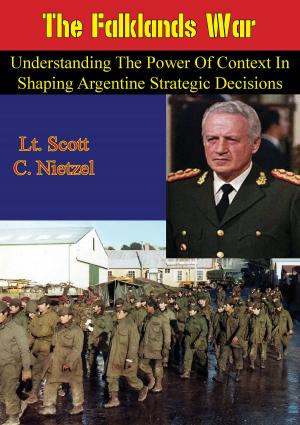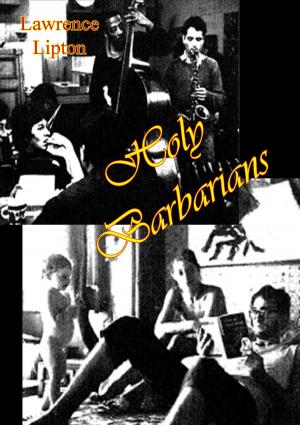Beyond the Battle Line: US Air Attack Theory and Doctrine, 1919-1941
Nonfiction, History, Germany, European General, Military, United States| Author: | Major Gary C. Cox | ISBN: | 9781786250377 |
| Publisher: | Tannenberg Publishing | Publication: | November 6, 2015 |
| Imprint: | Tannenberg Publishing | Language: | English |
| Author: | Major Gary C. Cox |
| ISBN: | 9781786250377 |
| Publisher: | Tannenberg Publishing |
| Publication: | November 6, 2015 |
| Imprint: | Tannenberg Publishing |
| Language: | English |
This study examines the development and usefulness of US air attack theory and doctrine during the interwar period, 1919-1941. This period represents more than twenty years of development in US Air Corps attack theory and doctrine. It was the first peacetime period of such development. Attack aviation during this time was a branch of aviation used to provide direct and indirect combat support to ground forces in the form of machine gun strafing, light bombing, and chemical attacks.
From the earliest origins, attack theory and doctrine evolved primarily along two paths direct and indirect support of ground and air force objectives. The direct support approach was based on fundamental beliefs by the Army that attack aviation was an auxiliary combat arm, to be used directly on the battlefield against ground forces and to further the ground campaign plan.
The indirect support approach, or air interdiction, was derived from the fundamental beliefs by the Air Corps that attack aviation was best used beyond the battle line and artillery range, against targets more vulnerable and less heavily defended, to further both the Air Force mission and the ground support mission.
As attack doctrine evolved, range and hardened targets became problematic for the single-engine attack plane.
Thus, attack theory and doctrine in terms of the indirect support approach, was adequately developed to be useful at the start of WWII. The use of light and medium bombers in North Africa showed the effectiveness of air interdiction and the indirect approach. Attack aviation had, indeed, established itself before WWII. Attack aviation, in the form of close air support, would have to wait for the lessons of WWII.
This study examines the development and usefulness of US air attack theory and doctrine during the interwar period, 1919-1941. This period represents more than twenty years of development in US Air Corps attack theory and doctrine. It was the first peacetime period of such development. Attack aviation during this time was a branch of aviation used to provide direct and indirect combat support to ground forces in the form of machine gun strafing, light bombing, and chemical attacks.
From the earliest origins, attack theory and doctrine evolved primarily along two paths direct and indirect support of ground and air force objectives. The direct support approach was based on fundamental beliefs by the Army that attack aviation was an auxiliary combat arm, to be used directly on the battlefield against ground forces and to further the ground campaign plan.
The indirect support approach, or air interdiction, was derived from the fundamental beliefs by the Air Corps that attack aviation was best used beyond the battle line and artillery range, against targets more vulnerable and less heavily defended, to further both the Air Force mission and the ground support mission.
As attack doctrine evolved, range and hardened targets became problematic for the single-engine attack plane.
Thus, attack theory and doctrine in terms of the indirect support approach, was adequately developed to be useful at the start of WWII. The use of light and medium bombers in North Africa showed the effectiveness of air interdiction and the indirect approach. Attack aviation had, indeed, established itself before WWII. Attack aviation, in the form of close air support, would have to wait for the lessons of WWII.

![Cover of the book Vanguard Of Valor : Small Unit Actions In Afghanistan Vol. II [Illustrated Edition] by Major Gary C. Cox](https://www.kuoky.com/images/2014/august/300x300/9781782894964-xwTe_300x.jpg)







![Cover of the book Last Flight From Singapore [Illustrated Edition] by Major Gary C. Cox](https://www.kuoky.com/images/2015/november/300x300/9781786257505-nFT2_300x.jpg)

![Cover of the book The 1973 Arab-Israeli War: The Albatross Of Decisive Victory [Illustrated Edition] by Major Gary C. Cox](https://www.kuoky.com/images/2015/november/300x300/9781786252791-N1Pw_300x.jpg)


![Cover of the book Hitting Home - The Air Offensive Against Japan [Illustrated Edition] by Major Gary C. Cox](https://www.kuoky.com/images/2015/november/300x300/9781786252432-Mh6l_300x.jpg)
